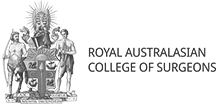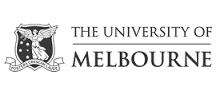Meniscal Tears
What is a meniscus?
The knee joint is made up of the femur (thigh bone) on the tibia (shin bone) with the patella (knee cap) sitting in a groove on the front of the femur. Between the femur and the tibia, there are two menisci. A meniscus is a C-shaped wedge of thick cartilage that acts as a shock absorber between the two bones. When you put weight through the leg, the femur pushes down onto the tibia. The menisci absorb this force and spread it more evenly over the joint surface. If a meniscus is removed, the forces going through the joint surface and surrounding bone triples or quadruples.
Meniscal tears
The knee is a very mobile joint with a lot of forces going through it. Sometimes, if enough force is transmitted through a meniscus, it can tear. This can occur with a direct blow to the knee, twisting of the joint or squatting, resulting in an acute (sudden) tear. The menisci can also gradually wear out with age and develop degenerative tears.
The menisci can tear in different patterns. Tears can travel across the width of the meniscus, along its length or horizontally, splitting it into two layers. These tears can cause clicking and pain. The meniscus can sometimes also tear as a flap that can flip in and out of place, which can cause the knee to lock up.
The menisci do not have a very good blood supply so tears do not tend to heal up very well and so they can cause persisting symptoms.
How are meniscal tears diagnosed?
When you see Justin, he will ask you detailed questions about how the injury occurred and how it has affected your knee. He will then examine the knee to see where the pain is located and to assess the overall function of the joint.
If necessary, an MRI scan can be organised to visualise the structures in the knee. The scan will almost always be able to demonstrate a tear if it is present. It also shows what type of tear it is.
Treatment of meniscal tears
The pain associated with a meniscal tear can be caused by inflammation that the tear causes. Sometimes the inflammation settles with rest and anti-inflammatories and as it does, the pain and swelling resolve. The tear will most likely still remain but if it is not causing problems, then it can be safely ignored.
If the pain persists or if there are mechanical symptoms such as painful clicking or locking of the knee, then surgery, usually an arthroscopy, may be required.
Surgical management of meniscal tears
Arthroscopy is the most common surgical treatment for meniscal tears. Under an anaesthetic, two small incisions (7mm) are made at the front of the knee to create portals into the joint. A small scope, is introduced into the joint though one portal and the joint is examined. The meniscal tear is identified and if it is not repairable, small cutting instruments and shavers are passed through the other portal and used to remove the torn area. As little meniscus as possible is removed, preserving the rest of the normal meniscus.
Occasionally, the tear is shaped in a way that makes it repairable. The repair is usually performed through the same two portals, using special sutures that secure the torn segment back to the rest of the meniscus.
The procedure takes about 20 minutes and is performed as day surgery. You will be able to leave the hospital about two hours after the operation.
Recovery after arthroscopy
Although it is a relatively small operation, recovery after a knee scope can still take 6 weeks. After the operation, you will have some bandages on the knee. These can be removed after 24 hours. Underneath the bandages are some plastic dressings which should be left intact until you are reviewed by Justin 2 weeks after surgery. Try to keep them dry. If you are having any problems with them, please call our office and we will help you.
The knee will be sore for a couple of weeks. It is important to take the painkillers you are given when you leave the hospital. You will also be given a few simple exercises to do. It is important to do these a couple of times a day to help regain your strength and range of movement. This helps to settle the pain and allows the knee to recover more quickly.
You may need crutches for a few days but it is safe to put your full weight through the leg. If your meniscus has been repaired, you will have to protect the knee a bit more and you will be given specific instructions about this.
Formal post-operative physiotherapy is often helpful. It can make recovery easier and quicker. We can help you find a physiotherapist near you.








